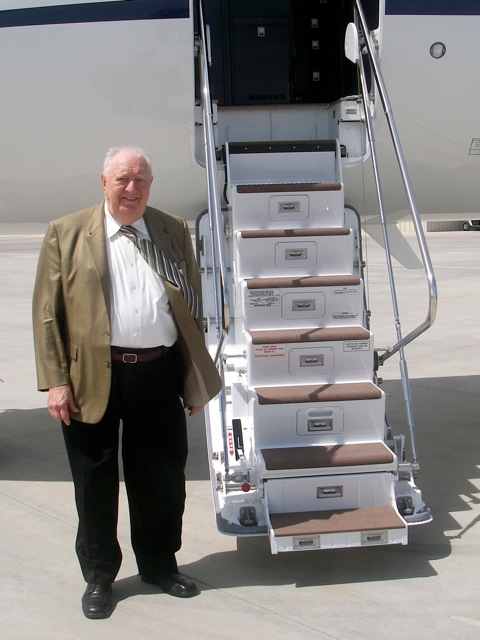Dr. Noise
Want your luxury jet to be just a little quieter than your competitor’s? Otto Pobanz is your man.
![]() Some airplane cabins are so noisy you need a pair of isolating headphones and an intercom system to carry on a conversation. Most helicopters and military airplanes are loud, and it’s always laughable to see characters aboard military airplanes in the movies talking like they were sitting in a library when, in real life, they’d be screaming at the top of their lungs.
Some airplane cabins are so noisy you need a pair of isolating headphones and an intercom system to carry on a conversation. Most helicopters and military airplanes are loud, and it’s always laughable to see characters aboard military airplanes in the movies talking like they were sitting in a library when, in real life, they’d be screaming at the top of their lungs.
Business executives don’t tolerate high noise levels because they need to be able to converse easily while they’re onboard, and some of them save their topmost secret conversations for the company airplane cabin.
A few wizards have become specialists in reducing the noise inside corporate cabins to levels well below the average airliner, and one of the most famous practitioners of the art is a retired chief pilot for a major retail store chain. His name is Otto Pobanz, but you can call him “Dr. Noise.” He doesn’t advertise, accepts new clients by referral only, and if you have to ask him how much he charges, you can’t afford him.
Pobanz learned a few years ago that among the most competitive of the world’s captains of industry, there’s a quiet battle over whose interior has the lowest readings on a standard noise meter. The unit of measure is the decibel, but the various formulations for measuring and “weighting” noise levels to match what the normal human ear actually hears creates different scales: dB(A) is one such weighting standard. A typical airliner might have an interior noise level of 80 dB(A) or more (turboprops run higher).
Industry standards aside, it’s the experience and ingenuity of people like Pobanz — who can make your airplane one silly decibel quieter — that allows one CEO to lord it over another. Pobanz will confide a few of his secrets, but he’s not about to give away the store. He looks for large areas of flat aluminum bulkheads that can amplify vibration like so many drumheads, and here he may apply a foam-based plastic or rubber dampening material. Floors are a major headache, as they are prone to pick up and amplify engine vibrations.
Those little air vents over the seat? You may not notice the high-pitched whistle, but Pobanz does. He and his partners at various modification centers may even remove the entire air vent system and, working with precision tools, smooth all the air passageways, eliminating sharp protrusions and enlarging openings, all in the pursuit of a few decibels.
Highly precise balancing of the rotating assemblies in a jet engine’s compressor and turbine sections can reduce engine noise.
He even has his crew fabricate a sound-blocking panel that slides into place to isolate noise from the main cabin entrance door, which is sealed with a pressurized bladder but can be a significant source of noise.
When he’s done, he’ll test fly the airplane, measure the interior noise with instruments, and deliver the final numbers only to his happy customer – who will then own the bragging rights.
